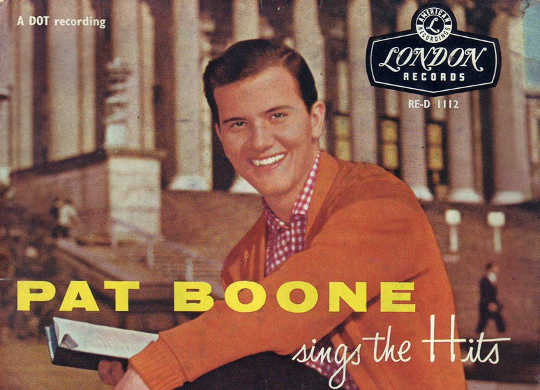
If music historians, not critics, chose which acts to induct into the Rock and Roll Hall of Fame, the selections would likely differ, says Richard Aquila. They might even include Pat Boone.
While some early rock ‘n’ roll acts receive little critical respect, historically speaking, these same musicians and singers played an important role in bridging musical styles and bringing cultures together, writes Aquila, professor emeritus of history and American studies at Penn State, in his book, Let’s Rock! How 1950s America Created Elvis and the Rock & Roll Craze (Rowman & Littlefield, 2017).
“I spend a lot of time discussing Pat Boone and other pop rockers in the book. Boone refers to himself not as the father of rock ‘n’ roll, but as the midwife of rock ‘n’ roll,” says Aquila.
“What he means by this is that his versions of Little Richard’s songs may not be as good as Little Richard’s originals, but Little Richard couldn’t get played on mainstream radio stations back in the ’50s, due to racism and other reasons. But, after the kids listened to Boone’s music, they tended to go on and want the real thing.”
Boone spent most of his early career covering rhythm-and-blues songs, like Richard’s “Tutti Frutti.” Boone’s versions, however, were influenced by pop styles and standards that were tamer and more familiar to white audiences of the time. He also sanitized Fats Domino’s “Ain’t That a Shame,” for his white audience’s ears and, apparently, their grammar. He tried, for instance, to change the title of the song to “Isn’t That a Shame.”
While many music critics now consider this artistic theft or cultural appropriation, Aquila says that some black artists at the time appreciated Boone’s cover songs.
At a concert, for example, Aquila writes that Domino introduced Boone to the audience and, pointing to one of his diamond rings, added that Boone’s version of “Ain’t That a Shame” bought him that ring.
“I am writing this book as a historian, not as a music critic,” says Aquila, whose weekly public history series, “Rock & Roll America” played on NPR and NPR Worldwide from 1998 to 2000. “Now, if I were writing this from the perspective of a music critic, my viewpoint would be very different. I might say that Pat Boone’s songs don’t appeal to my musical tastes, but as a historian, my argument is Pat Boone’s music tells you just as much about the 1950s as Elvis Presley’s.”
Among other white acts that covered rhythm and blues songs during that era, the Crew-Cuts covered the Chords’ “Sh-Boom,” and the McGuire Sisters sang a rendition of the Spaniels’ doo-wop song “Goodnight, Sweetheart, Goodnight.”
Aquila suggests that record sales back up Boone’s claims that cover songs eventually boosted the sales of originals. While Boone’s and other white pop artists’ versions of rhythm-and-blues tunes initially outsold the originals, by the mid-1950s, original versions began to dominate the charts.
Recording technology
The rise of mass media and technology in the 1950s helped transform rock ‘n’ roll into a major cultural phenomenon, according to Aquila. Magnetic tape recorders, just one musical innovation of the era, were developed in Germany during World War II and then used by entrepreneurs in America to forge a new recording industry.
“This technology allowed singers to record anywhere,” says Aquila. “Sam Phillips, in Memphis, for a few hundred dollars, builds his own studio and records Elvis. Or Buddy Holly can record in Clovis, New Mexico. It really makes rock ‘n’ roll more of a national grassroots music.”
Surprisingly traditional values
According to Aquila, one major misconception about rock’s early days is that the music exclusively represented a rebellion against traditional values and culture. While rebellion was present in rock ‘n’ roll, the music also represented many traditional values and attitudes, like patriotism and family.
“The whole culture of the United States during that time period was influenced by the Cold War and the music plugs into this Cold War culture,” says Aquila. “It doesn’t just reflect the patriotism that you find during those years, but you also find other traditional values of that time, whether it’s religion, family, and gender, or any other value, it’s there in rock ‘n’ roll music.”
Source: Penn State
Related Books
at InnerSelf Market and Amazon





























